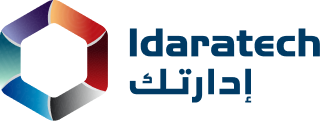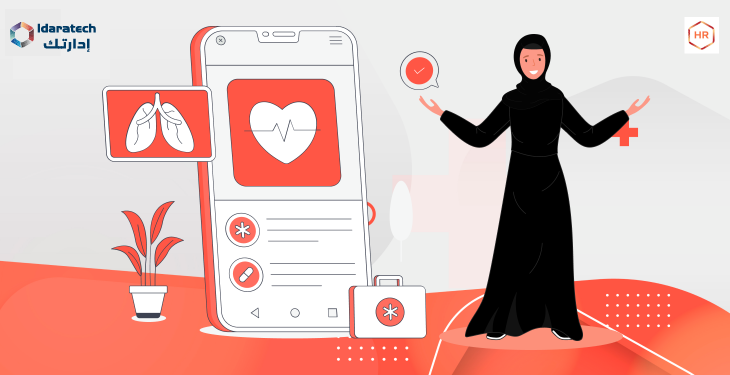Are you worried about how AMS software helps in healthcare industry? So, here you go! The COVID-19 pandemic has put unprecedented strain on the healthcare system worldwide, and India is no exception. As a result, the management teams have shifted the focus to reducing the process inefficiencies inherent within healthcare systems to free up workforce bandwidth as hospitals and clinics are overburdened trying to lead the efforts to control the spread of the virus.
Different healthcare providers have distinct issues to deal with. However, since most hospitals work 12-hour shifts and are open 24/7/365, one of the following issues frequently arises:
- Attendance and Time Management and Tracking
- Flexible staffing arrangements
- Timely and accurate budgeting
- In times of emergency, immediate employee relocation is necessary (e.g., COVID-19)
These responsibilities frequently result in many administrative demands that consume time that would be better used to provide patients with high-quality care. As a result, it can significantly impact the capacity to give patients high-quality care overall.
Imagine making schedules, manually inputting payroll data, and responding to each employee’s request for a schedule change. Is it a typical day for someone who works in the healthcare industry? Unfortunately, that question is answered “yes” far too frequently. If the COVID-19 pandemic has taught us anything, it’s time to explore and educate yourself about the world of time and attendance software.
Let us look at some of the key features of how AMS Software Helps in Healthcare industry.
Features How AMS Software Helps in Healthcare Industry

- Streamlined Record-Keeping: Attendance management software allows healthcare providers to maintain accurate and up-to-date employee attendance records. This eliminates the need for manual record-keeping and significantly reduces the potential for errors. The software can also be integrated with payroll systems, allowing for easy and automated calculation of employee salaries and benefits.
- Improved efficiency and productivity: AMS software helps in healthcare by automate many time-consuming administrative tasks, such as manually tracking employee attendance, processing leave requests, and calculating overtime. By automating these tasks, healthcare organizations can save staff time and improve productivity. In addition, this can allow staff members to focus on providing quality care to patients rather than spending time on administrative tasks.
- Improved Compliance: Healthcare providers are subject to strict regulatory requirements regarding employee attendance and timekeeping. Attendance management software can help organizations ensure compliance with these regulations by providing accurate and comprehensive employee attendance records. This can help healthcare providers avoid costly fines and penalties for non-compliance.
- Improved payroll accuracy: AMS software helps in healthcare that can integrate with payroll systems to ensure that employees are accurately paid for their work hours. This helps eliminate errors and ensure that staff members are paid on time and per their contracts.
- Scheduling and tracking: Healthcare organizations can use attendance management software to schedule and track employee shifts and attendance. This helps to ensure enough staff members are on hand to provide quality patient care. The software can also track absences and time off requests, making managing staff schedules easier and ensuring that all shifts are covered.
- Employee Engagement: AMS software helps in healthcare that allows healthcare professionals to view their schedules, request time off, and track their attendance records. This helps to promote transparency and boosts employee engagement.
- Real-time Notifications: Healthcare facilities can use attendance management software to notify employees about their schedules, shifts, and time off requests. This helps to keep everyone informed and improves communication.
- Cost Savings: By automating attendance tracking and other administrative tasks, healthcare organizations can save time and reduce the costs associated with manual processes. This leads to significant cost savings in the long run.
- Accurate Tracking: AMS software helps in healthcare to accurately tracks employee attendance, time off, and sick leave. It helps manage shifts, leaves, and schedules, ensuring that healthcare professionals are available when needed.
- Compliance with labor laws: The healthcare industry is subject to numerous laws and regulations, including laws governing employee attendance and overtime. AMS software helps in healthcare organizations comply with these laws by accurately tracking employee hours worked, overtime hours, and paid time off. This can help prevent legal issues and protect the organization from fines and penalties.
- Streamlining employee attendance tracking: Healthcare organizations require 24/7 staff coverage to ensure patients receive timely and quality care. AMS software helps in healthcare organizations to streamline employee attendance tracking, ensuring staff members are present when they are supposed to be. This can help reduce staffing gaps and prevent patients from being left without care due to staffing shortages.
- Improved patient care: Efficient staff attendance management leads to better patient care. When healthcare staff is present on time, patients receive timely care, and there are fewer delays in treatment. This can lead to improved patient outcomes and satisfaction.
- Enhancing employee accountability: By using attendance management software, healthcare providers can hold employees accountable for their attendance and punctuality. The software can track tardiness and absences, making identifying patterns and addressing any issues easier. This can help improve employee performance and ultimately enhance patient care.
Is AMS Software Help in the Healthcare Industry?

Yes, AMS Software Helps in Healthcare industry. It can assist in managing employee attendance, shift schedules, leave requests, and overtime hours. This software can also ensure compliance with labor laws and regulations, improve staff productivity and reduce the risk of errors. Additionally, it can enable healthcare organizations to track and analyze attendance data, which can be useful in workforce planning and decision-making. Here are a few ways of AMS software helps in healthcare industry:
1. Establishing a reliable attendance system:
In the healthcare industry, it’s common for nurse managers to be responsible for managing various shifts of the nurses they are in charge of. As a result, they may be more prone to human error if they use manual systems like logbooks (paper & pen).
Workers may try to commit attendance fraud through “buddy punching” or “tailgating,” among other techniques. A contemporary time and attendance tracking system should enable accurate time tracking and discourage fraudulent attendance. In addition, with cutting-edge software in place, hospital management should be able to learn more from the comprehensive reports that the software generates. For example, a button click should provide access to information on public holidays, paid and unpaid absences, and sick days.
2. Accurate payroll processing:
Payroll processing errors are often expensive for hospitals and a hassle for their employees. Complexity is common, and frequent chaos can result from hundreds of employees working round-the-clock in various hours, working overtime and night shifts, and taking lengthy or short breaks. A contemporary time and attendance system can accurately track the number of hours each employee puts in and determine their pay.
3. Detailed schedules:
Manually creating schedules requires a lot of time and labor. The work becomes significantly more challenging when it must be done to meet rescheduling requests brought on by staff absences or changes in shift schedules.
Based on personnel availability, skill sets, and hospital demands, scheduling and rescheduling tasks are streamlined by time and attendance software. In addition, the technology may avoid unnecessary overtime by dynamically shifting the roster based on availability and demand.
Hospitals can manage their administrative chores effectively and without placing an undue burden on their staff.
4. Management of a distributed workforce is simple:
An intuitive HR solution that can be accessed via smartphones could deliver clear clarity on what is expected from the employees with little manual involvement, as doctors and nurses distributed across the nation are leading the frontline struggle to contain the spread of the virus. As a result, healthcare organizations can scale up their capacity for critical care on demand with more agility. Among the numerous useful features, one of the standouts is a dynamic HRMS that integrates with a mobile attendance system.
5. Reduce reliance on HR:
Manual efforts involving many functions necessitate frequent back-and-forth transactions and management involvement from HR. The dependency on HR managers can be minimized while giving employees and their supervisors greater authority to make the necessary adjustments in attendance management and roster shifting when circumstances change with the help of a unified Information technology solution. With this mechanism, the teams on the ground can move around certain procedures to manage their own needs while providing the best care possible for the patients.
6. Eliminate attendance fraud:
The propensity of cheating is another drawback of tracking attendance via registers or logbooks. Paper records are simpler to falsify than software that tracks employee attendance.
With biometric attendance software that performs identity verification and prohibits proxy attendance, attendance fraud can be reduced to a minimum. Additionally, it can offer in-depth information on employee behavior, such as vacations, paid time off, and sick days.
Conclusion
The primary goal of hospitals should always be the treatment of their patients. It can be compromised neither on a typical day nor in times of crisis, as the worldwide epidemic brought on by COVID-19. In addition to providing for patients, hospitals must guarantee that their staff is treated equitably and has complete access to their shift schedule. Here, a AMS software helps in healthcare that can link hospital administration and the frontline employees, enabling the hospital to effortlessly strike the ideal balance between patient care and workforce optimization.
In this circumstance, hospitals must keep staff members happy by avoiding overworking them with unfavorable schedules. Hospitals can swiftly make the necessary staffing adjustments and conduct contact tracing with the help of the proper workforce management software. Healthcare experts could save countless lives because of technology.

